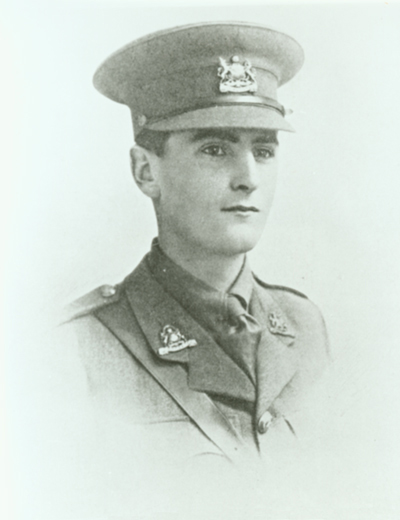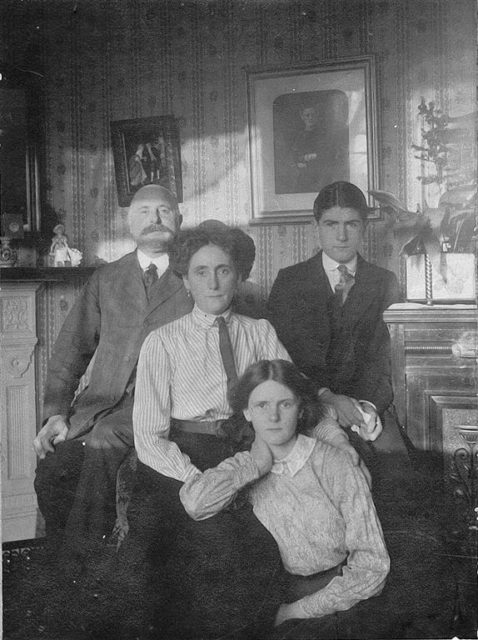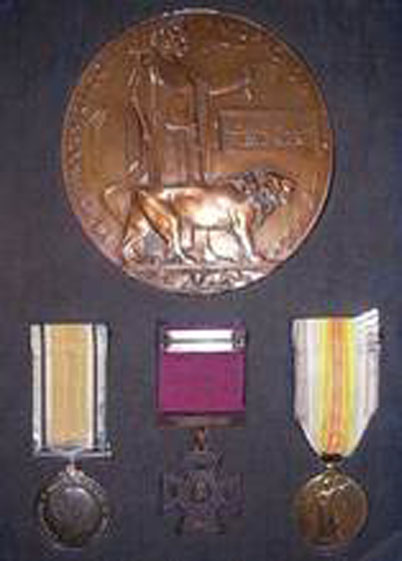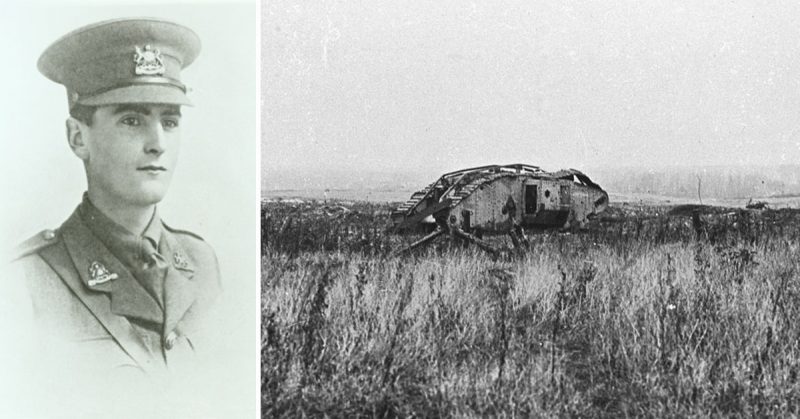One of only four Victoria Crosses won by tank crews in WW1 will go on public display for the first time on the centenary of the action in which the recipient died.
Captain Richard Wain was posthumously awarded the VC, the UK’s highest award for bravery, following his heroics at the Battle of Cambrai on November 20, 1917.
During the battle he was seriously injured when his tank was hit, but he shunned a stretcher, climbed out with a Lewis gun and attacked the enemy, captured a strong point, took prisoners and allowed the infantry to advance.
He continued shooting at the retreating Germans until he received a fatal shot to the head.
Cpt Wain’s family, who wish to remain anonymous, have loaned the Victoria Cross to the Tank Museum in Bovington, Dorset, where it will go on show from November 20.
The museum has one of the other four Tank Corps VCs – that of Cecil Sewell – and well-known collector Lord Ashcroft owns the VC won by Richard West.
But the location of the fourth WW1 tank crew VC that was won by Clement Robertson is unknown.

The museum is eager to know where it is and ultimately they’d like to display them all together before the Great War centenary ends next year.
Wain’s citation reads: “For most conspicuous bravery in command of a section of Tanks. During an attack the Tank in which he was, was disabled by a direct hit near an enemy strong point which was holding up the attack.
“Captain Wain and one man, both seriously wounded, were the only survivors.
“Though bleeding profusely from his wounds, he refused the attention of stretcher bearers, rushed from behind the Tank with a Lewis gun, and captured the strong point, taking about half the garrison prisoners.
“Although his wounds were very serious he picked up a rifle and continued to fire at the retiring enemy until he received a fatal wound in the head. It was due to the valour displayed by Captain Wain that the infantry were able to advance.”
The VC was presented to his parents by King George V at Buckingham Palace on 20 April, 1918.

David Willey, Curator of The Tank Museum, said: “We received communication from Cpt Wain’s family with the kind offer of the loan of the Victoria Cross, as they would love others to know of his story.
“They have asked we display the medal with the following line ‘On loan from the family to share his memory with pride’ – and how right they are to be proud.
“Only four tank crew won VCs in the First World War and this offer came out of the blue and we were absolutely thrilled.
“Cpt Wain’s heroism was astonishing – he single-handedly took on the enemy and allowed the infantry to advance.
“After his tank was hit, killing all but two of the crew and seriously injuring him, he detached a Lewis gun.
“He waved away stretcher bearers and despite being 200 yards ahead of the infantry charged at three enemy machine guns.
“He succeeded in putting them out of action and taking numerous prisoners before being mortally wounded by a shot to the head. He was buried near his tank but his grave was subsequently lost – and all this before his 21st birthday.’
“After the emergence of this VC from his family we would love to find the location of the fourth WW1 tank VC won by Clement Robertson.

“He was an Irishman serving in the Tank Corps, when he won his VC on 4 October 1917.
“In order that his tanks would follow the correct route during the attack in Zonnebeke, Belgium, he had spent several days in no-man’s-land taping routes.
“During the attack he led the tanks, on foot, towards their objective, almost certainly knowing he would be killed.
“He was mortally wounded after the objective had been reached but he had already ensured success.
“To find the location of Robertson’s VC would be of great interest. Our dream would be to exhibit all four VCs together.
“We are privileged indeed to be able to display Richard Wain’s VC and it will help teach another generation about the sacrifice of those young men who went before.”
At the outbreak of war Welshman Richard Wain enlisted Enlisted 7th (Cyclist) Battalion, The Welch Regiment, September, 1914, transferred to the Manchester Regiment (Public Schools Battalion) before being commissioned as an officer in the Manchester Regiment. He was wounded on June 1, 1916, the first day of the Battle of the Somme, and joined the Tank Corps in January 1917.
